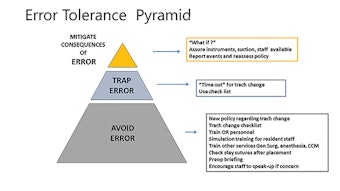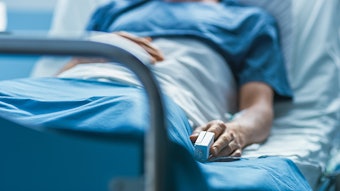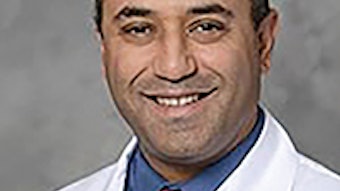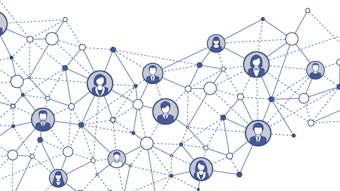From the Education Committees
Obstructive sleep apnea (OSA) is a common condition in children and one that most otolaryngologists are familiar with. Pediatric OSA has an estimated prevalence of 1%-4% in the United States.1 In most cases adenotonsillectomy (T&A) is the first-line therapy. About 500,000 of these procedures are performed annually in the U.S.
New Horizons in Diagnosis and Treatment of Pediatric Obstructive Sleep Apnea
Meredith Merz Lind, MD, For the Pediatric Otolaryngology Education Committee
Obstructive sleep apnea (OSA) is a common condition in children and one that most otolaryngologists are familiar with. Pediatric OSA has an estimated prevalence of 1%-4% in the United States.1 In most cases adenotonsillectomy (T&A) is the first-line therapy. About 500,000 of these procedures are performed annually in the U.S.2 Pediatric OSA is associated with behavioral issues (enuresis, aggression, hyperactivity, depression, and anxiety), poor school performance, and decreased quality of life, as well as increased healthcare utilization and risk for neurocognitive and cardiovascular morbidities. In 2019 the AAO-HNSF published an updated Clinical Practice Guideline for Tonsillectomy in Children, with recommendations for tonsillectomy for children with sleep disordered breathing and comorbid conditions and for children with confirmed OSA on polysomnogram.3 There is evidence that early T&A for OSA improves behavior, quality of life, and polysomnogram findings when compared with patients in a watchful waiting group.4
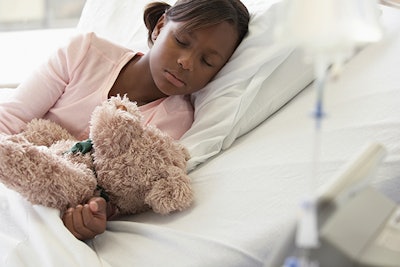
While most children have significant improvement or resolution of OSA after adenotonsillectomy, 25%-40% of patients may have residual obstruction and apnea. Residual OSA is more prevalent when severe obstruction was noted on preoperative polysomnogram and in children with obesity, craniofacial anomalies, hypotonia, and Down syndrome. For children with residual symptoms after adenotonsillectomy, an overnight polysomnogram is the standard for evaluation. Continuous positive airway pressure (CPAP) remains the criterion standard for treatment of residual OSA. However, CPAP is often poorly tolerated in pediatric patients with high prevalence of noncompliance. Because of this challenge, additional evaluation and treatment methods have recently been described.
Individualized therapies should always be considered in appropriate patients. Weight loss can be highly effective in improving obstruction in patients with obesity. For patients with craniofacial abnormalities, orthodontic appliances or craniofacial procedures may ameliorate symptoms. In addition, addressing nasal obstruction medically or surgically may reduce obstruction in some patients.
In many patients with residual OSA after T&A, the site(s) of ongoing obstruction may not be obvious. Drug-induced sleep endoscopy (DISE) was first described in the 1990s as an improvement over awake nasopharyngoscopy to better capture the dynamic upper airway collapse that may occur during sleep. DISE has been studied increasingly in pediatric patients in recent years. Most providers describe use of DISE for children with continued moderate or severe OSA after T&A. However, some have advocated DISE for pre-T&A evaluation in patients who are high risk for residual OSA postoperatively or for children with OSA and small tonsils and adenoids.5 Multiple pharmacologic protocols for DISE have been described, but none replicate REM sleep perfectly. Many pediatric institutions prefer a protocol of dexmedetomidine and ketamine because of a lower risk of respiratory depression that can be seen with propofol.5 Otolaryngologists and their anesthesia colleagues should work together to define the best protocol for their institutions. After initiation of drug-induced “sleep,” a flexible fiberoptic endoscope is inserted via the nose and passed through the rest of the upper airway to evaluate potential obstruction in the nasal cavities, nasopharynx, palate/velum, oropharynx, tongue base, lingual tonsils, and supraglottis and glottis. There are at least six DISE scoring systems that have been described; none of them are considered superior or universally accepted among pediatric otolaryngologists.6 It is recommended that a provider consistently use the same scoring system to evaluate patients in DISE.
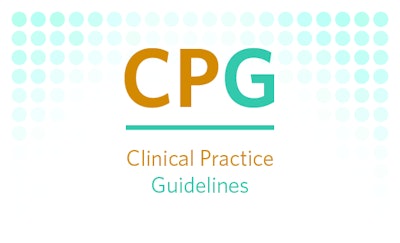
The AAO-HNSF Clinical Practice Guideline: Tonsillectomy in Children (Update) was published as a supplement to Otolaryngology–Head and Neck Surgery in February 2019. To access the guideline, executive summary, plain language summary, patient handouts, podcasts, and more, go to https://www.entnet.org/tonsillectomyCPG.
Cine MRI is another methodology described to identify sites of obstruction after T&A by MRI during sedation and with spontaneous ventilation. Advantages of cine MRI include simultaneous assessment of multilevel airway obstruction and improved definition of lingual tonsil tissue from primary base of tongue obstruction.5 It is less widely used than DISE, primarily due to scheduling considerations and the ability of surgeons to both complete assessment and intervene under the same anesthetic procedure with DISE.
After airway evaluation with DISE or cine MRI, targeted intervention can be performed based on the identified site(s) of obstruction. Many providers discuss the possibility of interventions with families prior to DISE so that the intervention can be performed at the time of evaluation. If obstruction is noted at the level of the palate, uvulopalatopharyngoplasty or expansion sphincter pharyngoplasty may be recommended. If tongue base obstruction is noted, lingual tonsillectomy, posterior midline glossectomy, or hyoid suspension may be appropriate. Sleep dependent laryngomalacia may also be noted, and epiglottopexy or supraglottoplasty may be of benefit. The degree of improvement in OSA after these directed interventions is variable but has been described in various studies in the range of 50%-80%.7
The hypoglossal nerve stimulator was first described by Alan R. Schwartz, MD, in a pilot study in 2001. Since that time it has become a widely used procedure in adults with severe obstructive sleep apnea, with many studies showing significant improvement in AHI, oxygen desaturations, arousal index, and quality of life indices.9 Pilot studies are now underway to evaluate the safety and efficacy of hypoglossal nerve stimulator implantation in pediatric patients. To date, the device has been implanted in children and adolescents with Down syndrome and severe OSA after T&A. Caloway et al. published a series of 20 patients, aged 13-17 years, who underwent the procedure with no long-term complications. All patients completed a two-month postoperative sleep study with excellent nightly utilization, significant reduction in AHI, and moderate improvement in QOL measures.10
While many children with OSA have resolution of symptoms with adenotonsillectomy, management of residual disease is complicated and involves understanding of evolving diagnostic and treatment procedures. To learn more about these issues, consider enrolling in FLEX, the AAO-HNSF new multimodality lifelong learning platform, where pediatric obstructive sleep apnea will be explored in the February 2021 module.
References:
- Lumeng JC, Chervin RD. Epidemiology of pediatric obstructive sleep apnea. Proc Am Thorac Soc. 2008;5(2):242-252. doi:10.1513/pats.200708-135MG
- Bhattacharyya N, Lin HW. Changes and consistencies in the epidemiology of pediatric adenotonsillar surgery, 1996-2006. Otolaryngol Head Neck Surg. 2010;143(5):680-684. doi:10.1016/j.otohns.2010.06.918
- Mitchell RB, Archer SM, Ishman SL, et al. Clinical Practice Guideline: Tonsillectomy in Children (Update). Otolaryngol Head Neck Surg. 2019;160(1_suppl):S1-S42. doi:10.1177/0194599818801757
- Marcus CL, Moore RH, Rosen CL, et al. A randomized trial of adenotonsillectomy for childhood sleep apnea. N Engl J Med. 2013;368(25):2366-2376. doi:10.1056/NEJMoa1215881
- Wilcox LJ, Bergeron M, Reghunathan S, Ishman SL. An updated review of pediatric drug-induced sleep endoscopy. Laryngoscope Investig Otolaryngol. 2017;2(6):423-431. doi:10.1002/lio2.118
- Friedman NR, Parikh SR, Ishman SL, et al. The current state of pediatric drug-induced sleep endoscopy. Laryngoscope. 2017;127(1):266-272. doi:10.1002/lary.26091
- Manickam PV, Shott SR, Boss EF, et al. Systematic review of site of obstruction identification and non-CPAP treatment options for children with persistent pediatric obstructive sleep apnea. Laryngoscope. 2016;126(2):491-500. doi:10.1002/lary.25459
- Schwartz AR, Bennett ML, Smith PL, et al. Therapeutic electrical stimulation of the hypoglossal nerve in obstructive sleep apnea. Arch Otolaryngol Head Neck Surg. 2001;127(10):1216-1223. doi:10.1001/archotol.127.10.1216
- Hong SO, Chen YF, Jung J, Kwon YD, Liu SYC. Hypoglossal nerve stimulation for treatment of obstructive sleep apnea (OSA): a primer for oral and maxillofacial surgeons. Maxillofac Plast Reconstr Surg. 2017;39(1):27. doi:10.1186/s40902-017-0126-0
- Caloway CL, Diercks GR, Keamy D, et al. Update on hypoglossal nerve stimulation in children with down syndrome and obstructive sleep apnea. Laryngoscope. 2020;130(4):E263-E267. doi:10.1002/lary.28138
